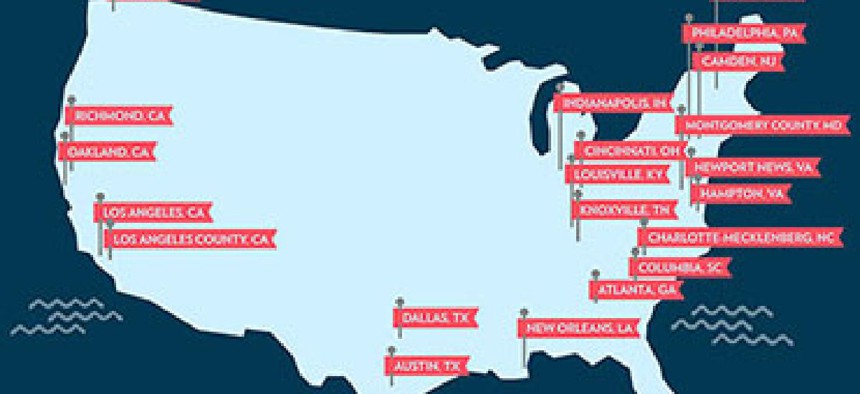Police Data Initiative aims to 'increase transparency'

Two goals of the Police Data Initiative are to enhance interoperability of systems and make it easier to extract useful insights from collected data.

The map shows the police departments participating in the White House Police Data Initiative. (Image: White House blog)
The White House announced plans to partner with cities, technology firms, and non-governmental organizations to help U.S. police departments manage and share law enforcement data, with an eye to improving police performance and mending frayed relationships between departments and the communities they serve.
Police departments often face technical challenges to gather, organize, and analyze policing and crime data, according to a blog post from federal CTO Megan Smith and presidential advisor Roy L. Austin, Jr. For example, in Camden, N.J., where President Barack Obama announced the initiative, police use 41 individual systems that are not interoperable, requiring redundant data entry on the part of officers, and difficulties in extracting useful insights from data that is collected.
The White House convened a group of volunteer technologists in Camden for a two-day "design sprint," working with patrol officers, detectives and leadership to get an idea of what an integrated, interoperable police technology system should look like.
Overall the effort is focused on "using open data to increase transparency, build community trust, and support innovation," and using technology and data analytics to, "to identify problems, increase internal accountability, and decrease inappropriate uses of force," per the blog post.
Announcing the program in Camden, Obama said that the data initiative "is helping Camden and other innovative cities to strengthen their work and hold themselves accountable by sharing [data] with the public. Departments might track things like incidents of force, so that they identify and handle problems that could otherwise escalate."
Twenty other communities around the U.S. are participating in different ways in the Police Data Initiative, which includes a commitment to release data previously retained for official use only as open data. Datasets include information on vehicle stops, police use of force, and other information on police encounters. Other efforts include working with video analysis experts to come up with ways for law enforcement agencies to use video data from police body cameras in a cost-effective way.
Additionally, the Police Foundation and geodata firm ESRI are collaborating on an open data portal to guide users of police open data, while Presidential Innovation Fellows are focusing on developing a "playbook" for law enforcement agencies to use in identifying datasets for release. Code for America and CI Technologies are collaborating on open source software to support efforts by law enforcement agencies to open up their data.
NEXT STORY: Can Wikipedia forecast the flu?






